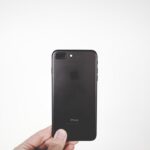In an era where smartphones have become an integral part of daily life, the importance of location privacy has surged to the forefront of digital security discussions. The iPhone, a flagship device from Apple, is equipped with a myriad of features that enhance user experience, but these features often come at the cost of personal privacy. Location services on the iPhone allow users to access navigation, weather updates, and location-based services, but they also raise significant concerns regarding how and when this data is shared.
As users navigate through their digital lives, understanding the implications of location sharing is crucial for maintaining privacy. The iPhone’s location services utilize GPS, Wi-Fi, and cellular data to pinpoint a user’s location with remarkable accuracy. While this technology can be incredibly useful, it also poses risks if not managed properly.
The potential for unauthorized access to location data can lead to various privacy breaches, including stalking, unwanted tracking, and data exploitation by third parties. As such, it is essential for iPhone users to be aware of their location privacy settings and take proactive measures to safeguard their personal information.
Key Takeaways
- Location privacy on iPhone is important for protecting your personal information and ensuring your safety.
- Sharing your location can pose risks such as stalking, theft, and invasion of privacy.
- You can disable location services on your iPhone by going to Settings > Privacy > Location Services and toggling it off.
- Using a VPN can help hide your IP address and protect your location data from being tracked.
- Manage location settings for specific apps by going to Settings > Privacy > Location Services and selecting the apps you want to customize.
Understanding the Risks of Sharing Your Location
Sharing your location can seem innocuous at first glance, especially when it enhances the functionality of apps and services. However, the risks associated with this practice are multifaceted and can have serious implications. One of the most pressing concerns is the potential for malicious actors to exploit location data.
For instance, if a user frequently shares their location on social media or through various applications, it becomes easier for someone with ill intentions to track their movements. This can lead to stalking or even physical harm in extreme cases. Moreover, location data can be harvested by companies for targeted advertising or sold to third parties without the user’s explicit consent.
This commodification of personal information raises ethical questions about privacy in the digital age. For example, a user who frequently visits certain locations may find themselves inundated with advertisements related to those places, often without realizing that their data has been collected and analyzed. The implications extend beyond mere inconvenience; they touch on fundamental rights to privacy and autonomy in an increasingly interconnected world.
How to Disable Location Services on iPhone

Disabling location services on an iPhone is a straightforward process that can significantly enhance user privacy. To begin, users should navigate to the “Settings” app on their device. From there, they can scroll down and select “Privacy & Security,” where they will find the “Location Services” option.
Tapping on this will reveal a toggle switch at the top of the screen that allows users to turn off location services entirely. This action will prevent all apps from accessing location data, providing a blanket level of privacy. However, completely disabling location services may not be practical for everyone, as many applications rely on this feature for optimal functionality.
Instead, users can selectively disable location services for specific apps. By scrolling down the list of applications under “Location Services,” users can choose which apps are allowed to access their location and under what circumstances—whether always, while using the app, or never. This selective approach allows users to maintain some level of convenience while still protecting their privacy.
Using VPNs to Hide Your IP Address
| VPN Provider | Number of Servers | Encryption Level | Supported Devices |
|---|---|---|---|
| ExpressVPN | 3000+ | AES-256 | Windows, Mac, iOS, Android |
| NordVPN | 5000+ | AES-256 | Windows, Mac, iOS, Android |
| Surfshark | 3200+ | AES-256 | Windows, Mac, iOS, Android |
While disabling location services is a critical step in protecting personal information, it is equally important to consider how IP addresses can reveal a user’s approximate location. A Virtual Private Network (VPN) serves as an effective tool for masking one’s IP address and enhancing online privacy. When a user connects to a VPN, their internet traffic is routed through a secure server located in a different geographical area, effectively concealing their true IP address from websites and online services.
Using a VPN not only helps in hiding your IP address but also encrypts your internet connection, making it more difficult for hackers or malicious entities to intercept your data. For instance, when using public Wi-Fi networks—often a hotspot for cybercriminals—a VPN provides an additional layer of security by ensuring that sensitive information remains private. Many reputable VPN services offer user-friendly applications specifically designed for iPhones, allowing users to easily connect and disconnect as needed.
Managing Location Settings for Specific Apps
Managing location settings on an iPhone requires a nuanced approach that balances functionality with privacy concerns. Each app installed on the device may have different requirements for location access; therefore, users should take the time to review and customize these settings according to their preferences. For example, navigation apps like Google Maps or Apple Maps may require continuous access to provide real-time directions, while social media platforms might only need access when posting updates.
To manage these settings effectively, users should revisit the “Location Services” section within the “Privacy & Security” settings. Here, they can see a comprehensive list of all installed applications and their respective location access permissions. By selecting an app from this list, users can choose from options such as “Never,” “Ask Next Time,” or “While Using the App.” This granularity allows users to maintain control over which apps can track their movements and under what circumstances.
Protecting Your Location Data on Social Media

Social media platforms have become ubiquitous in modern communication; however, they also pose significant risks regarding location privacy. Many users unwittingly share their precise locations when posting updates or photos, which can lead to unwanted attention or even dangerous situations. To mitigate these risks, it is essential for users to be mindful of their privacy settings on these platforms.
For instance, Facebook allows users to tag their locations in posts or check-ins; however, this feature can be disabled in the app’s settings. Users should consider whether sharing their location adds value to their posts or if it merely exposes them to potential risks. Additionally, platforms like Instagram offer similar tagging features that can be turned off or adjusted based on user preferences.
By taking these precautions, individuals can enjoy social media while minimizing the risk of compromising their location privacy.
Using Private Browsing and Search Engines
In addition to managing app-specific location settings and social media privacy, utilizing private browsing modes and alternative search engines can further enhance location privacy on an iPhone. Most modern browsers offer a private browsing feature that prevents the storage of browsing history and cookies during a session. This means that websites visited during private browsing will not be saved in the browser’s history or linked to the user’s IP address.
Moreover, opting for search engines that prioritize user privacy—such as DuckDuckGo—can significantly reduce the amount of data collected during online searches. Unlike traditional search engines that track user behavior and store search history for targeted advertising purposes, DuckDuckGo does not collect or share personal information. By combining private browsing with privacy-focused search engines, users can create a more secure online experience that minimizes exposure to tracking and data collection.
Additional Tips for Protecting Your Location Privacy on iPhone
Beyond the aforementioned strategies for safeguarding location privacy on an iPhone, there are several additional practices that users can adopt to enhance their overall security posture. Regularly updating the iOS operating system is crucial; updates often include security patches that address vulnerabilities that could be exploited by malicious actors. Keeping apps updated also ensures that users benefit from the latest security features and improvements.
Another important consideration is being cautious about connecting to public Wi-Fi networks. While convenient, these networks are often unsecured and can expose users to various cyber threats. If connecting to public Wi-Fi is necessary, using a VPN becomes even more critical in protecting sensitive information from potential interception.
Lastly, educating oneself about phishing scams and other social engineering tactics is vital in maintaining digital security. Users should be wary of unsolicited messages or emails requesting personal information or urging them to click on suspicious links. By remaining vigilant and informed about potential threats, iPhone users can take proactive steps toward protecting their location privacy in an increasingly complex digital landscape.
If you are looking to learn more about how to hide your location on iPhone, you may want to check out this article on getiphoneinfo.com. This website offers a variety of tips and tricks for iPhone users, including ways to protect your privacy and security while using your device. By following their advice, you can ensure that your location remains hidden from prying eyes.
FAQs
What is location services on iPhone?
Location services on iPhone is a feature that allows apps and websites to use information from cellular, Wi-Fi, and GPS networks to determine your approximate location. This can be used for various purposes such as mapping, location-based reminders, and finding nearby services.
Can you hide your location on iPhone?
Yes, you can hide your location on iPhone by turning off location services for specific apps or by enabling the “Share My Location” feature only when necessary. Additionally, you can use a VPN (Virtual Private Network) to mask your IP address and location.
How do you turn off location services for specific apps on iPhone?
To turn off location services for specific apps on iPhone, go to Settings > Privacy > Location Services. From there, you can choose which apps can access your location and turn off the ones you don’t want to share your location with.
What is the “Share My Location” feature on iPhone?
The “Share My Location” feature on iPhone allows you to share your current location with specific contacts for a set period of time. This can be useful for meeting up with friends or family members, but it can also be turned off when not needed.
Can you use a VPN to hide your location on iPhone?
Yes, you can use a VPN (Virtual Private Network) to hide your location on iPhone. A VPN encrypts your internet connection and routes it through a server in a different location, masking your IP address and making it appear as though you are located elsewhere.










